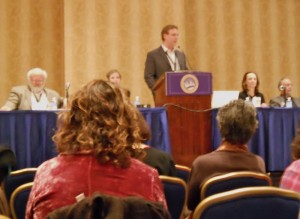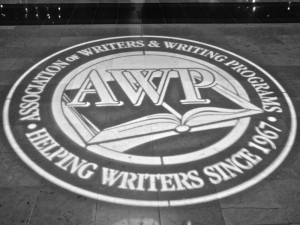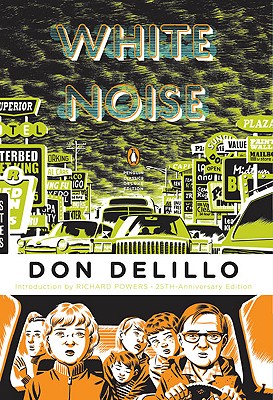 Editor’s Note: I recently had the wonderful opportunity to moderate a panel on criticism at the 2011 AWP Conference entitled “The Good Review: Criticism in the Age of Book Blogs and Amazon.com.” Joining me were Charles Baxter, Stacey D’Erasmo, Gemma Sieff, and Keith Taylor. Needless to say, it was an honor to share the stage with such esteemed writers, critics, and editors. And it was equally humbling to have more than two hundred people pack the Delaware Suite at the Marriott Wardman Park Hotel on a Friday morning at 9 a.m. to attend the event.
Editor’s Note: I recently had the wonderful opportunity to moderate a panel on criticism at the 2011 AWP Conference entitled “The Good Review: Criticism in the Age of Book Blogs and Amazon.com.” Joining me were Charles Baxter, Stacey D’Erasmo, Gemma Sieff, and Keith Taylor. Needless to say, it was an honor to share the stage with such esteemed writers, critics, and editors. And it was equally humbling to have more than two hundred people pack the Delaware Suite at the Marriott Wardman Park Hotel on a Friday morning at 9 a.m. to attend the event.
But what made me happiest was the vigorous conversation that ensued during the Q&A portion afterward. I’d originally wanted to put together this panel because I have some very real questions about what makes a good review—to whom, for whom, with what audience in mind, under what circumstances, and so on. Further, because the notion of criticism has been evolving over the last several decades, particularly with the rise of (as our title suggests) book blogs and Amazon.com, I thought it would be wonderful to bring together writers whose work in this field approaches the subject in different ways, and from different perspectives. So it was heartening–inspiring, even– to discover that so many other writers and teachers of writing share both a commitment to and an interest in engaging with criticism as an art form.
This re-professionalization of writing about writing, and the attempt to bring readers and writers together for a discussion centered on craft and how literature intersects with culture, is at the core of our mission here at Fiction Writers Review. And in the spirit of continuing that discussion, as well as bringing it to those who weren’t able to attend the panel, we are happy to announce that we will be publishing the talks delivered by Charles Baxter, Stacey D’Erasmo, and Keith Taylor over the next several days.
What follows, then, is the brief talk that I gave as an introduction to the panel. We hope you enjoy, and that you’ll also share your thoughts on each of these pieces as they publish during the coming week.
The Good Review:
 In the late 1990s, I ran an independent bookstore in Madison, Wisconsin, with my now brother-in-law, Dean Bakopoulos. Back then, straight out of college, wanting nothing more than to be writers, this gig was a dream job. We spent our days surrounded by books and customers who wanted to talk with us about writing, and in the evenings we had the pleasure of hosting readings for everyone from Barry Lopez to Lorrie Moore, Sherman Alexie to David Sedaris, Studs Terkel to Alice McDermott.
In the late 1990s, I ran an independent bookstore in Madison, Wisconsin, with my now brother-in-law, Dean Bakopoulos. Back then, straight out of college, wanting nothing more than to be writers, this gig was a dream job. We spent our days surrounded by books and customers who wanted to talk with us about writing, and in the evenings we had the pleasure of hosting readings for everyone from Barry Lopez to Lorrie Moore, Sherman Alexie to David Sedaris, Studs Terkel to Alice McDermott.
Yet the longer we worked at the store, the more I became aware of this other side of literature: Criticism. It took many forms, and it served an equally varied number of purposes—pre-publication reviews in Publishers Weekly and Kirkus helped us know what was coming out and gave us a sense of how many copies we should order, reviews in the New York Times let us know what books people would be coming in to the store to ask about (or not!) over the next several days, and publications like Harper’s, The Atlantic, The New York Review of Books, and The Guardian, among others, let us know what sorts of conversations our customers would be eager to engage us in that month. I should also mention that there was a section of books in the store—hidden back by poetry, only a few shelves in size—labeled “Literary Criticism.” Though judging from their titles, most of theses books seemed like you might need a PhD (or four) to take a crack at them. So at twenty-three, with only an undergrad degree under my belt, I steered clear.
Instead, my experience with and conception of “criticism” for those next several years was that of a practical tool—it helped me, as a businessman, know what was coming out, who was publishing it, and what the subject matter of a book might be. “Oh, you like multi-generational family sagas about Hungarian Jews post-World War II?” I might say to a customer. “Well, I have just the thing for you. Step right this way…”
And, of course, depending on whether a particular arbiter of taste had weighed in “thumbs up” or “thumbs down” on the product, I might also add, mid-way to the shelves, “And it got a great review in the INSERT: Times/Harper’s/Atlantic.” As if it were entirely about quality control. USDA approved. Think books as slabs of beef.
Now, though I’m poking a bit of fun here, the honest truth was that I didn’t see or understand the artfulness of criticism until after I left the bookstore. Yes, I could appreciate a well-written review, just as I did a well-written poem or essay or novel. But its purpose was still largely a singular one: Assessment.
 And I think that this is the sense that many people have of criticism. When someone asks, “Did you see the review of Gryphon in the Times?” our initial response—if we haven’t read it—is to reply, “No. Was it a good review?” By this we mean positive. Whether it got a “thumbs up” or a certain number of stars.
And I think that this is the sense that many people have of criticism. When someone asks, “Did you see the review of Gryphon in the Times?” our initial response—if we haven’t read it—is to reply, “No. Was it a good review?” By this we mean positive. Whether it got a “thumbs up” or a certain number of stars.
But for whom is an assessment and plot summary helpful? Which, if I’m being honest, makes up the vast amount of what we call reviewing these days. Certainly it’s helpful to the bookseller—invaluable, in fact. You’ve got to know what to put on the shelves. And it’s helpful to the reader who likes to read based on subject matter: about Paris in the twenties, say, or Scandinavian crime literature. And it’s certainly helpful to the author whose book is reviewed favorably (not so much if the verdict is thumbs down), insofar as their work has been validated on some level.
But what does this sort of review teach us about being readers? Or, as fellow writers, about craft or style or execution? What does it tell us about technique? About literary trends? About the voices of contemporary fiction and how they relate, connect to, or riff on the long history of writing that has come before them? After all, books aren’t written in a vacuum.
This new way of thinking about criticism suddenly became very relevant to me when, several years after finishing my MFA and nearly six years after leaving the bookstore, I suddenly found myself editing for Fiction Writers Review. This was an entirely new audience, I realized. One made up of fellow writers and lovers of fiction. And instead of being in the business of selling books, I was operating with the mission to support and promote the work of emerging writers. Not just by featuring their debut novels and story collections, but also by helping them publish their first reviews and interviews and essays. So I found myself urging them to strip all but the most important plot summary out of their work, to resist assessing whether a book was necessarily “good” or not. Honestly, that didn’t seem to matter to a larger discussion about craft, which was what I wanted to understand as a writer-in-training, and where I could engage as both a reader and an editor.
Part of this position had solidified after a friend, Holiday Reinhorn, had her first story collection, Big Cats, published several years earlier. The stories are tough, gritty pieces set in large part in the Pacific Northwest. Prior to its publication, individual stories were published in Ploughshares, Tin House, Gulf Coast, Other Voices, Northwest Review, Columbia, and other literary magazines and journals. Her work has been a nominee for both the Pushcart Prize and Best New American Voices anthologies. On the cover is a blurb by Marilynne Robinson, who calls the collection “Vivid, witty, and very fresh.”
The cover also happens to feature a bit of leopard skin. The back of one, it seems. And apparently this image “deceived” at least one buyer of the book, who took her ire to Amazon.com to express her opinion. This individual writes the following:
Perhaps we should not be surprised that this reviewer writes under “shopaholic.”
Now, clearly this sort of review is not to be taken seriously. Nor would anyone ever confuse shopaholic as a critic. But what I think it reveals—albeit in an exaggerated fashion, no pun intended—is that to so many individuals, criticism has been boiled down to a relationship of consumerism: I will choose to pay for and then consume this because it is A) good, according to others; or B) has to do with subject matter that I already know I like.
Yet, of course, shopaholic has confused taste with success. She – or he – judges the book not on whether it achieved the goals the author set out to accomplish, but whether she “liked” the book, which in turn is based on how she thinks all “good” books must be.
We see this elsewhere. The consumer mentality has even begun to institutionalize itself in our educational systems. I recently heard an undergraduate declare in a classroom I was observing: “I don’t pay $40,000 a year to learn about stuff I could read on the Internet.” The class was discussing the possibility that the rise of evangelical Christianity might have its origins in the fact that universities no longer tackle subjects like theology in their curriculum.
Likewise, as the Associate Director of the English Department Writing Program at the University of Michigan, our office routinely field calls from angry parents who say things like, “I don’t pay tens of thousands of dollars in tuition for my kid not to get an ‘A’ in this class.” Their children are investments that they are seeking to protect and, I assume, cash in on later? But I digress…
What I want to say is that as an editor I am excited to work with writers on reviews not only for the purpose of publication, but also as an opportunity to help those writers sort through their own analysis of the books. And, thereby, to become stronger thinkers themselves. Though the Internet, like “the media,” is routinely blamed for all the ills of society, I hope that Fiction Writers Review can be a place where we can engage in a discussion of craft and technique that has less to do with taste and more to do with approach. When we begin discussing an angle for their reviews, I always ask my writers, “What stylistic technique most stood out to you? Why?” And then I push them to explore those avenues. I never ask if they liked the book. That seems irrelevant, in a sense.
Because I’m no longer in the business of selling books, I believe that a good review is—regardless of form, length, or format—one that will leave a reader thinking about writing in a new way, regardless of whether they ever decide to purchase the book or not. One that will generate discussion among a lively and healthy group of fellow writers. One that will teach us—me, the writer, the readers—a bit more about how it is that we interact with literature, and how we pursue our own craft as authors. That will leave us stepping away, saying to ourselves, “I hadn’t thought of that before.”
Further Links and Resources:

- On Wednesday we will publish “Owl Criticism,” by Charles Baxter.
- On Thursday we will publish “An Education in Book Reviews,” by Stacey D’Erasmo.
- On Friday we will publish “Some Thoughts on Reviewing Poetry in 2011,” by Keith Taylor.
- In the meantime, here is a recent composite piece on criticism from the Huffington Post, compiled by Anis Shivani, on the state of book reviewing. The author asked eighteen writers the following question: “How can book reviewing be relevant to the new generation of readers?” Respondents include Jay Parini, Jane Ciabattari, Sven Birkerts, Roxana Robinson, Ron Charles, Stacy Muszynski, Greg Barrios, and Laurie Hertzel.
- You can also read Cynthia Ozick’s 2007 Harper’s essay “Literary Entrails,” in which she argues why criticism is so important to writing, readership, and culture.






